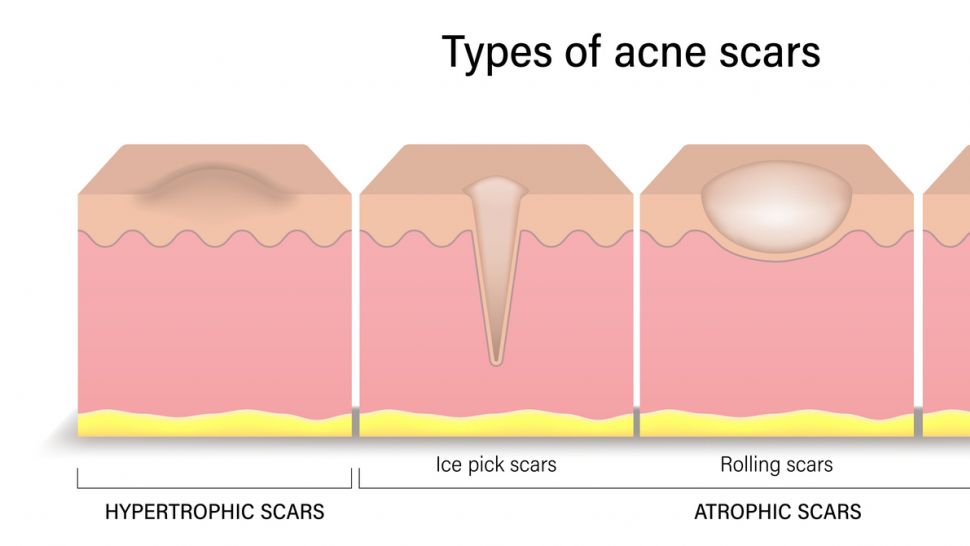In general, acne scars can be divided into several types: atrophic – indentations of different shapes and sizes appear, hypertrophic – bumps are formed due to excessive collagen production, and pigmented – the skin is smooth but has excessive pigment.
There are a multitude of procedures in the fight against scars. According to the individuality of the skin, which ones should be performed, in what period of time, and how they should be combined. For their removal, chemical peeling, CO2 laser peeling and PDL are extremely effective.
Chemical peeling deals with pigment spots formed as a result of acne, excessive exposure to the sun, hormonal and other factors. The type of chemical peeling is determined – superficial, medium deep, and deep. Regardless of the type, the procedure is non-invasive and painless.
The only sensation is a slight burning and tingling sensation. A few days after the procedure, the skin is red, and the damaged skin begins to peel, which is the desired effect of the applied chemical agent. It is not advisable for the patient to remove the formed crusts by themselves, they should wait for them to fall off by themselves. After a week, the skin is completely soothed. It is necessary to apply sun protection against UVA and UVB rays daily, as well as abundant hydration.
Dead cells are removed from the surface of the skin, improving its functioning. There is smoothing of the relief, shrinking of pores, erasure of fine wrinkles, and removal of dark spots.
Chemical peeling regulates oiliness and reduces inflammation. About 2-3 procedures per month are needed to remove pigmentation. Contraindications for performing the procedure are the presence of viral infections of the skin, wounds on the face, during pregnancy and breastfeeding, with very sensitive and thin skin.
PDL (Pulse Dye Laser) can be used as a gentle method with a quick recovery period. Acne and its scars, hemangiomas, rosacea, psoriasis, telangiectasia, and others can be treated with it. Red spots and inflamed acne are treated with PDL lasers. The laser has a wavelength of 595 nm and successfully deals with redness and vascular lesions. Its action takes place by passing through the layers of the epidermis and the dermis, the laser beam is absorbed by the oxyhemoglobin in the blood vessels, converted into heat, and leading to the coagulation of the vessels without the danger of affecting the surrounding tissues.
There is no pain during the procedure, but it is possible that there will be redness of the skin a few hours after it. Applying a high sun protection factor is also necessary after this procedure. In the treatment of acne scars, several procedures are needed every 30 days. They are successfully combined with chemical peeling, but there must be a period of one month between the two procedures. It is appropriate that both methods be planned before the onset of summer. It is not performed during pregnancy, breastfeeding, or local infections in the treatment area.
